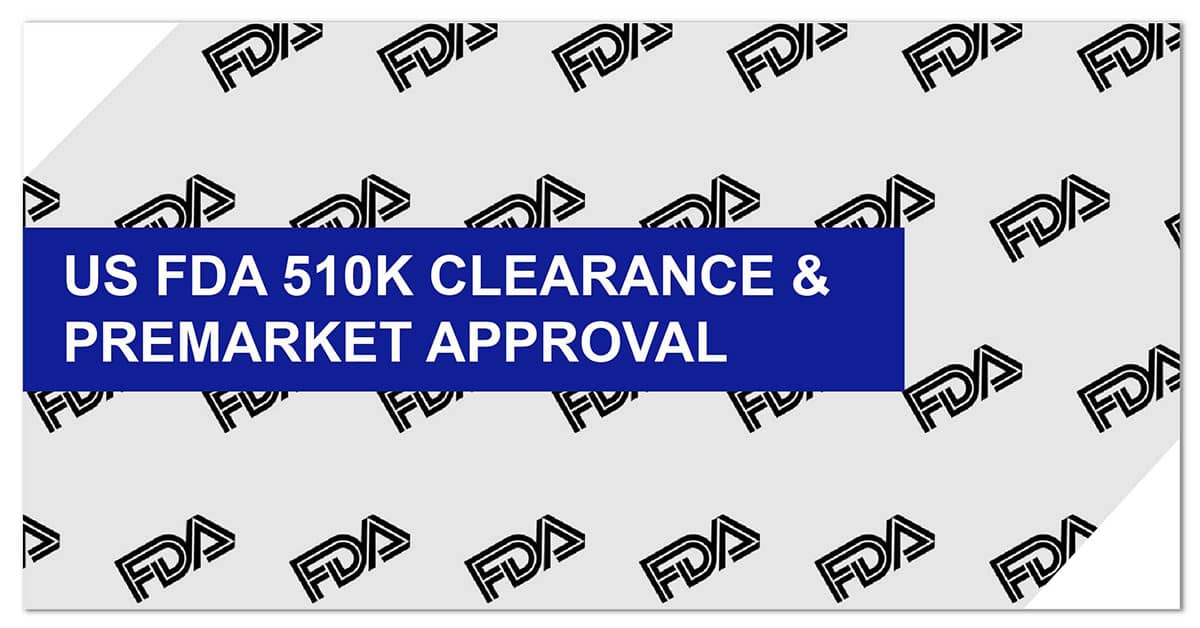FDA 510(K) Submission & Certification in Germany.
What is FDA 510(k) Certification?
FDA 510(k) is a regulatory process mandated by the US Food and Drug Administration (FDA) to ensure that medical devices marketed in the United States are safe, effective, and legally compliant. The submission involves proving that a device is substantially equivalent to an existing legally marketed device (predicate device).
- Class I Devices: Generally exempt from 510(k) requirements.
- Class II Devices: Require 510(k) submission for clearance.
- Class III Devices: High-risk devices need premarket approval (PMA).
Achieving FDA 510(k) clearance allows manufacturers to legally market their medical devices in the USA. For German manufacturers seeking access to the US market, compliance with these regulations is crucial.
How to Register Medical Device in US FDA?
To register your medical device with the FDA:
- Determine the Classification: Identify if your device is Class I, II, or III based on associated risks.
- 510(k) Submission: Required for Class II devices.
- PMA Submission: Mandatory for Class III devices.
- Compliance with QSR: Adhere to 21 CFR Part 820 Quality System Regulations.
Classification Overview:
Class | Risk Level | Examples |
Class I | Low Risk | Bandages, hospital furniture |
Class II | Moderate Risk | Catheters, surgical gloves |
Class III | High Risk | Pacemakers, defibrillators |
Understanding the correct classification is key to determining whether your device requires FDA 510(k) clearance or PMA submission.

Medical Device Classification For US FDA Registration:
FDA 510(k) medical device classification depend on the intended use of the device. The devices are classified as Class 1, Class 2, and Class 3 medical devices as per the risk associated with them.
Class | Type of Risk | Examples |
Class 1 | Low risk (General control) | Hospital furniture, Bandages |
Class 2 | Moderate risk | Catheters, surgical gloves |
Class 3 | High risk | Pacemakers, defibrillators |
The medical device classification can be confusing for manufacturers as they have limited exposure to the system. Class 1 devices are subjected to fewer regulatory requirements as compared to class 2 and class 3 devices. For the regulatory compliance of your medical device, you should know the class of your device, so that you can apply for FDA 510(k) clearance or PMA process.
Why FDA 510(k) Matters for German Manufacturers
For German medical device manufacturers, entering the US market presents significant opportunities. FDA 510(k) clearance ensures:
- Global Market Access: Gain a foothold in one of the largest medical device markets.
- Regulatory Compliance: Meet stringent US safety and efficacy standards.
- Enhanced Credibility: Strengthen your brand reputation internationally.
How Can Operon Strategist's Help in US FDA 510(k) Registration?
Operon Strategist offers end-to-end consulting services for German manufacturers navigating the complex FDA 510(k) submission process.
Our Services Include:
- Predicate Device Identification: Help in finding existing legally marketed devices for comparison.
- Substantial Equivalence Evaluation: Analyze and document equivalence between your device and predicate devices.
- Technical File Preparation: Create a comprehensive 510(k) submission with all required data.
- Regulatory Guidance: Assist in responding to FDA queries and additional information requests.
- QMS Compliance Support: Align your processes with 21 CFR Part 820 Quality System Regulations.
With years of experience, our team collaborates closely with notified bodies and stays updated on FDA regulatory requirements.
To discuss your support needs you can mail us at enquiry@operonstartegist.com or you can WhatsApp us your queries, and we answer them shortly.
FAQ'S
Most medical devices marketed in the United States do not require the completion of a 510(k) submission. Determining if your device is 510(k) exempt or not is a crucial first step.
There are three types of 510(k) submissions: Traditional, Abbreviated, and Special. Each type has its own requirements and may be appropriate for different devices.
No. After FDA grants clearance, the device is issued a 510(k) registration number. This number never expires and remains tied to the device.
The FDA 510(k) review process typically takes about 90 days. However, the timeline may be longer depending on the completeness of the submission and whether FDA requests additional information.
FDA approval is required for high-risk Class III devices, while 510(k) clearance applies to most Class II and some Class I devices. Clearance means the device is substantially equivalent to an existing legally marketed device.
